
Ryan Decker, Bricks and Bones with a Fairy on Top throne, 2022; Carved basswood, acrylic, and cast white bronze. Photography by Luis Corzo.

Stephen Markos photographed in New York’s Chinatown by Ryan Lowry for PIN–UP
In March 2023, under the Manhattan Bridge, tucked away on the second floor of an East Broadway mall, a small bright spot was filled with chairs that looked frozen in a state of contortion, lamps resembling plants and fungi, and a mirror with an unsettling ouroboric frame. These fantastical objects were to be found at Superhouse, a Chinatown art and design gallery founded in 2020 by Stephen Markos to showcase conceptual furniture and functional sculptures. The exhibition, Blurring the Timeline, perfectly encapsulated the Superhouse ethos, with pieces Markos had rescued from archival obscurity displayed alongside new work in a rigorously curated whole. It’s a testament to his discerning eye that the show appeared seamlessly unified, as though all the pieces were contemporaneous, when in fact they spanned 50-plus years of design.
Markos started Superhouse during the coronavirus pandemic, in 2020, with just an Instagram account and the aim of elevating work from the past while supporting new talent. He curated digital experiences with designers but ultimately yearned for a physical space to allow people to touch and interact with the objects. Dissatisfied with the way so much design is shown in appointment-only showrooms, primarily for industry people, Markos wanted Superhouse to democratize the experience of engaging with it. “There are all these people making amazing stuff, and there’s so much incredible work from the archive, but unfortunately, there are very few venues getting that to the public. Social media only goes so far, and people can find studio visits intimidating to ask for.”

Ryan Decker, Bricks and Bones with a Fairy on Top throne, 2022; Carved basswood, acrylic, and cast white bronze. Photography by Luis Corzo.
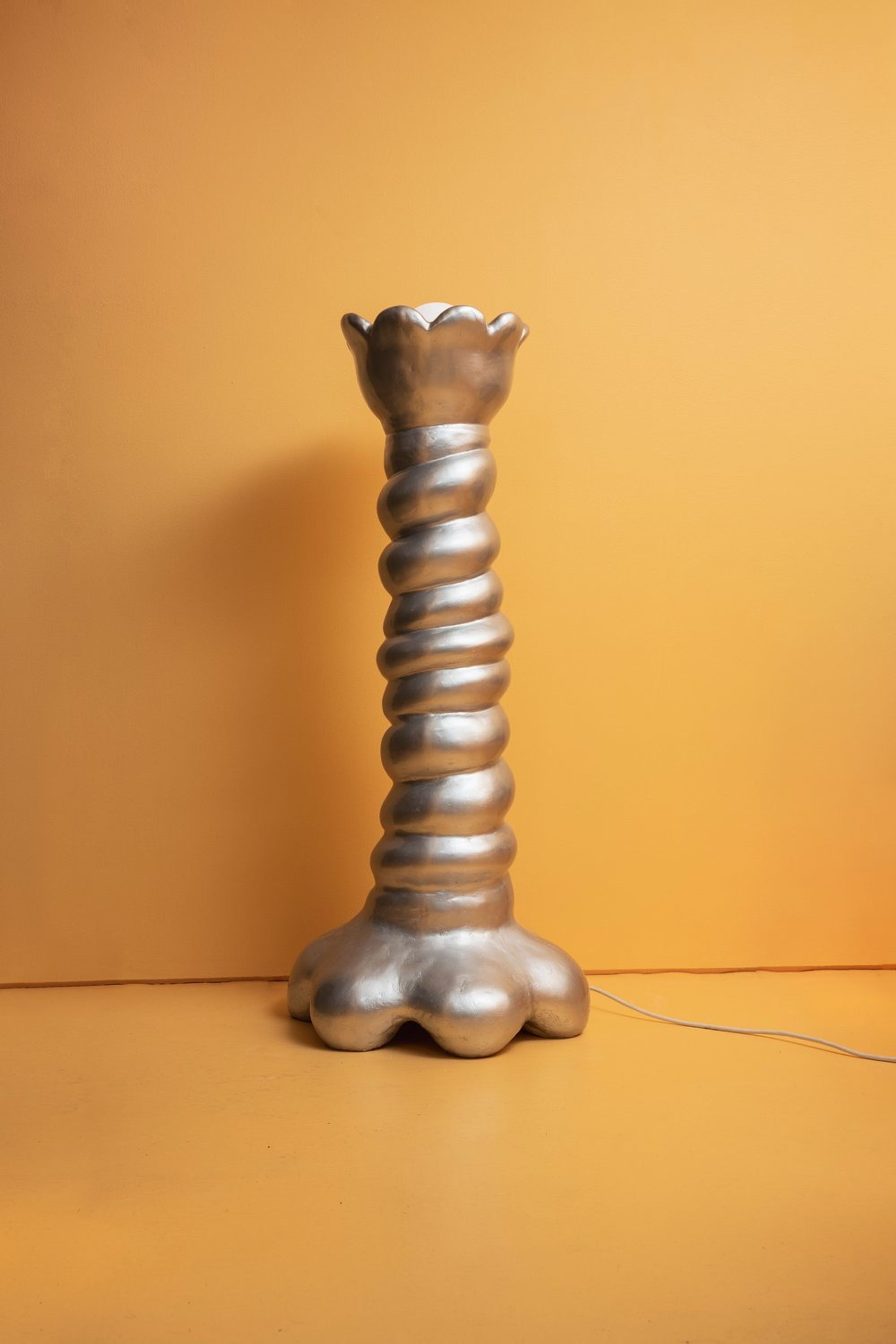
Ellen Pong, Bean Pole lamp, 2022; Ceramic and color-shifting automotive paint. Photography by Sean Davidson.

Ryan Decker, Fetus Cycle mirror, 2022. Photography by Luis Corzo.
In the winter of 2020–21, Markos held Superhouse’s first public exhibition in Brooklyn, a pop-up called Super Group featuring 50 artists and designers from around the world — playful and surreal, the works ranged from furry chairs and Dr. Seuss-style mirrors to a lamp resembling a smoke stack and more conventional Postmodern furniture. As a natural next step, he opened the Chinatown space at the end of 2021. To date, he has put on nine exhibitions, an even blend of group and solo shows, the latter all featuring new designers. While it’s common to promote new talent in the art world, there isn’t much of an analogous process in the design world, something Markos is keen to correct. All his solo shows have been dedicated to newcomers who hadn’t had one prior, among them ceramicist Ellen Pong, who exhibited at Superhouse last winter. She describes Markos as a gallerist in the old-fashioned vein who helped bring her work to fruition, while Kim Mupangilaï, an interior-architect-cum-furniture-designer who will soon show at Superhouse, remembers how Markos approached her before she’d even completed a piece. Designer Ryan Decker was initially hesitant about how much it would cost to 3D-render wallpaper that looked like the stone walls of a castle for his digital-feudalist show from last year. Still, Markos encouraged him to go for it. Shaina Tabak is the latest artist Markos is giving a significant break with her first solo show at Superhouse.
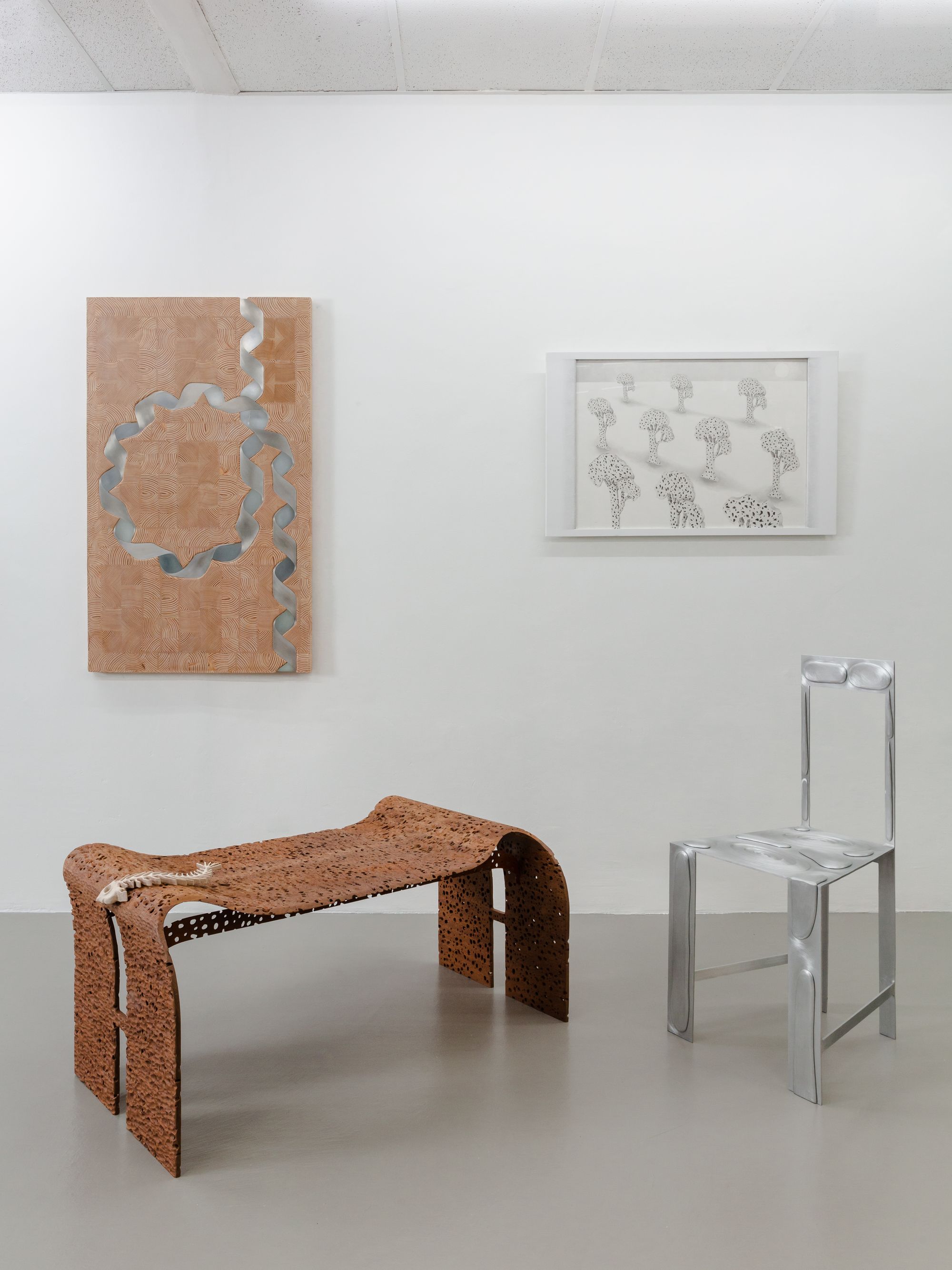
Installation view of Shaina Tabak’s exhibition On Object Tendency at Superhouse. Photo by Brian W. Ferry.
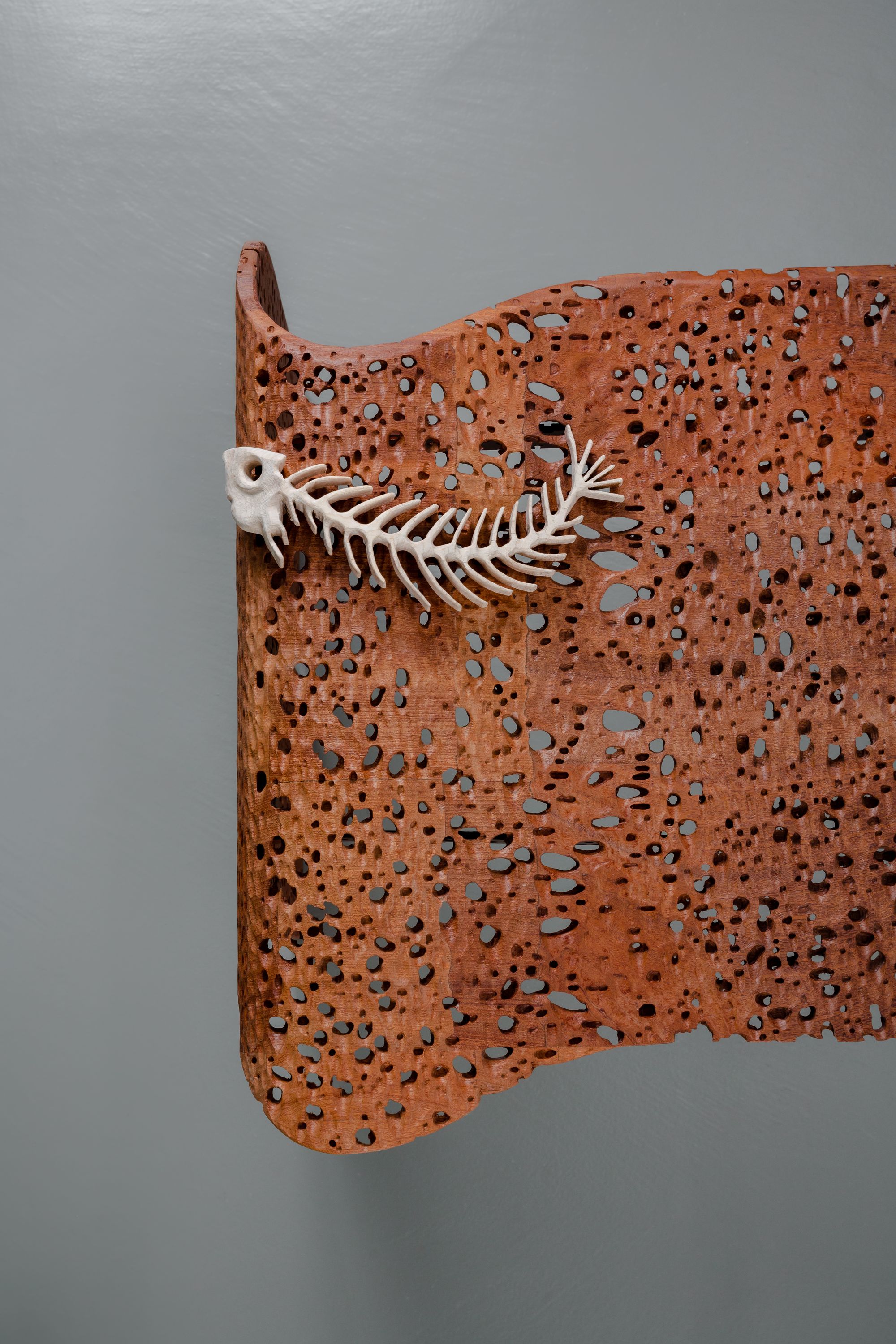
Installation view of Shaina Tabak’s exhibition On Object Tendency at Superhouse. Photo by Brian W. Ferry.
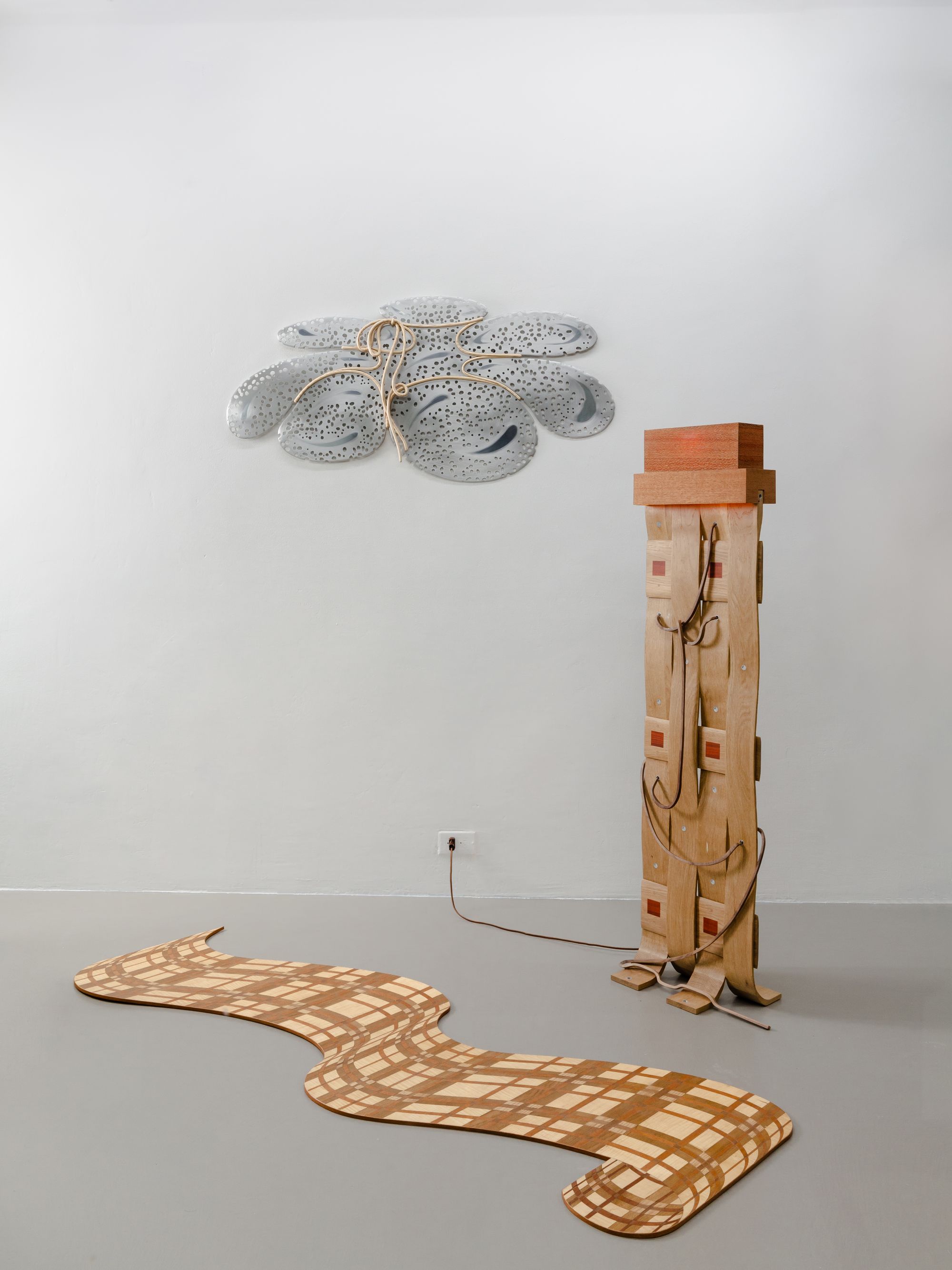
Installation view of Shaina Tabak’s exhibition On Object Tendency at Superhouse. Photo by Brian W. Ferry.
It can be difficult for artists making conceptual furniture or functional sculptures to exhibit their work, one of the reasons, Markos believes, that enormously talented designers from the Postmodern period have not been remembered so much as their peers in the art world. One of his primary inspirations is the gallery Art et Industrie, a pioneering New York City space that encouraged radical developments in the art-furniture movement between 1977 and 1999. In Return to Downtown, shown at Superhouse in the fall of 2022, 20 Art et Industrie pieces were redisplayed, among them Howard Meister’s P.Strut chair, Main & Main’s Queen Anne, Queen Anne chair, and James Hong’s Karnak bookcase. “The main thing I want to highlight by bringing this work back into the market is that art furniture and collectible design really began with this group of people in the U.S.,” says Markos, who also hopes to “start a dialogue between the avant-garde past and the designers I’m working with today, which can really open doors for them creatively.” Sean Gerstley, the first designer to show solo at Superhouse, acknowledges how older artists he met through the gallery, such as sculptor Richard Snyder, have influenced his practice.
If the name Superhouse sounds familiar, that’s because it nods to legendary Italian radicals Superstudio, who sought escape from the dominant tropes of Modernism through their sardonic art-objects. For them, design freed from the requirements of commercialism could be magical tools for transforming everyday life, a spirit Markos hopes to revive with Superhouse. “If you bring all this beauty in, you start to think about your home life in a different way,” he muses. “It will ultimately improve your perception of the world, and maybe this attitude will push society forward.”
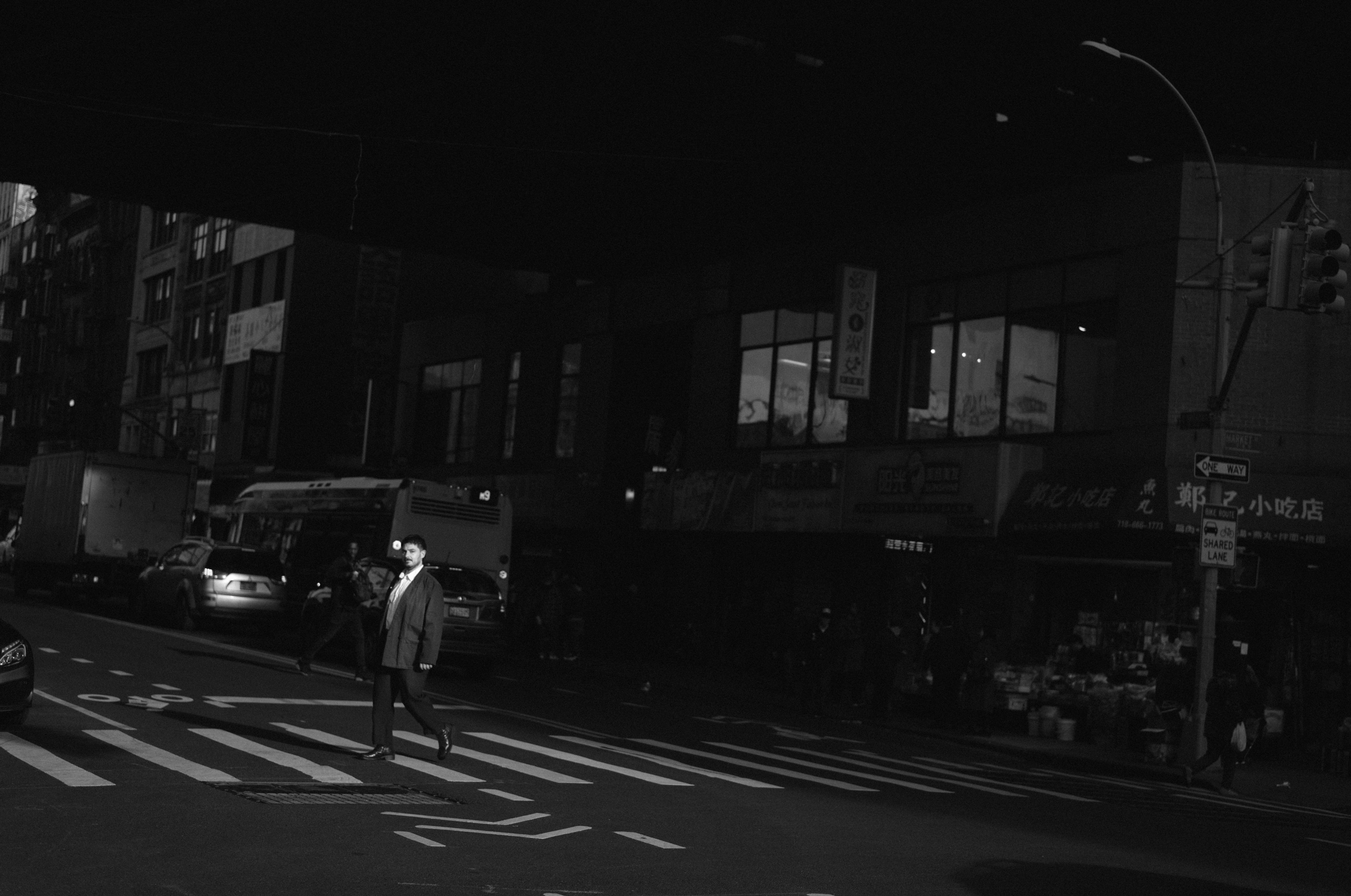
Stephen Markos photographed in New York’s Chinatown by Ryan Lowry for PIN–UP